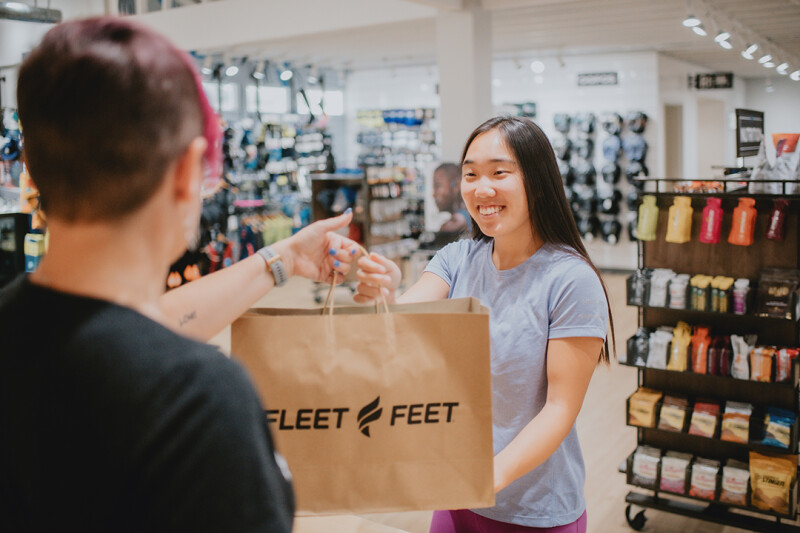In November 2022, OpenAI introduced ChatGPT to the public, giving many people their first look at the power of artificial intelligence (AI). Through ChatGPT, users realized AI could help them do a wide variety of things, from writing poems to writing computer code.
In the business world, AI quickly proved helpful with numerous tasks and operations. Some companies created ChatGPT-based chatbots to handle customer service. Others utilized AI to save time and resources while creating content, analyzing data, and soliciting feedback to improve processes.
According to Cisco, “83 percent of executives believe AI is a strategic priority for their businesses today.”
“AI is definitely changing everything,” says Crystal Vilkaitis, owner of Crystal Media. Her company educates retailers to improve their businesses and offers marketing services for dealers, including Jesse Brown’s Outdoors in Charlotte, NC. While many companies now use some form of AI, retailers have been slow to incorporate it into their operations, says Vilkaitis. “Retailers are still a little skeptical or aren’t embracing it as much as they can,” she says. “But I’m a big advocate for retailers leveraging AI.”
With AI, retailers can save precious time and money while performing various jobs, from crafting compelling website copy to developing marketing plans and merchandising the store.
Vilkaitis shared four specific ways retailers can use AI to improve their stores.
1. Develop a Marketing Plan
One benefit of AI is that it can help you tackle seemingly large, expensive and time-consuming tasks, like creating a marketing plan for your store.
“If we’re using AI, we no longer need big fancy marketing firms to come up with unique, creative ideas for our customers and stores,” says Vilkaitis.
Using a platform like ChatGPT or Gemini, you can enter a wide variety of information about your business, such as store descriptions, client data, target consumer groups, market trends, your marketing budget, and goals. The AI platform can also ask you questions about your business to better understand the store and what you’re trying to achieve.
The AI technology analyzes all the information and then produces a marketing plan that includes examples of materials and content to create, platforms and audiences to engage, timelines for various tasks, suggestions for tracking performance, and much more.
2. Create a Social Media Strategy
“One of my favorite ways to use AI is to develop a 30-day social media strategy,” says Vilkaitis. “On ChatGPT, you might say (to the AI platform), ‘You’re the best social media strategist in the world, and you’re going to help me create a 30-day social media strategy.’”
(With most AI services, you get the best results by communicating in a flattering matter — sort of buttering up the AI machine with phrases like, “You’re the best…”)
Next, input your website address and important information, such as the social media sites you use and how often you post on them. Communicate the types of posts to include, such as images or videos that highlight people or posts promoting a sale or certain products. Then, tell the AI platform that you want it to write the captions and hashtags and provide suggestions on images or videos to use.
Finally, and most importantly, ask, “What questions do you have for me before you begin?” The AI will respond by asking questions to tailor posts to your desired audience. It will ask things like, “What is your target audience? What types of posts have worked in the past? What are your specific goals? Do you have any upcoming events or promotions that we should discuss in the next 30 days?”
Within seconds, the AI will ask how you would like your social media plan formatted. “It will then have your entire plan for the 30 days,” says Vilkaitis. “Then you just go and take the pictures or videos to post.”
3. Establish Your Brand Voice
Any time you communicate with customers, your messages resonate more when they reflect the vibe of your store, rather than sounding generic. For example, product descriptions generate more interest if they mimic the language and tone of the store owner and employees.
You can create a custom “generative pre-trained transformer” (GPT) for your store’s brand voice with AI. When you create text for a website or draft an email message for customers, AI will use the custom GPT to transform the text to reflect the character of your business.
Granted, creating a custom GPT requires some training. On an AI platform, you first upload past emails or other correspondence that reflects your preferred tone and language. The AI technology will then provide writing samples, and you can offer feedback on whether the language matches your voice.
You can also customize the GPT to use keywords that improve search engine optimization. “You can tell the AI, ‘Write me a keyword-rich product description that tells a story and highlights the product’s benefits.’ Then boom, in seconds, you’re getting way more out of these product descriptions than what you’re getting from the manufacturer,” says Vilkaitis
4. Get Inspiration for Merchandising
Retailers typically start each day with a long to-do list, leaving little mental energy for creative pursuits like merchandising. If you don’t employ a merchandising expert and want to spruce up the store, AI can provide some imaginative ideas. Vilkaitis recommends that retailers use Chat GPT’s free Dall-E app, which uses text to create AI-generated images.
When you go into the Dall-E app, say something like, “You’re the best visual merchandiser in the world. I want you to create a store layout for a new outdoor gear store.” You can then supply more information concerning design elements you prefer, whether it’s certain materials, colors, textures, or fixtures. The AI will generate a store image that you can use to inspire a new look on the shop floor.
While AI can inspire us, reduce our workload, and even save us money, retailers are understandably reluctant to adopt this new technology. Some business owners lack knowledge of how AI works, while others doubt its abilities and benefits. Some view AI negatively due to fears that computers will supplant people to our detriment. Like any technology, AI has its plusses and minuses. But all retailers would be wise to familiarize themselves with AI, because it’s already reshaping the way people work.
This article was excerpted from Trailheads, a publication for Switchback, the educational and business gathering for the outdoor industry set for June 16-18, 2025 in Nashville, TN. It is written by Marcus Woolf, Trailheads Editor, a reporter, writer and editor for outdoor business and consumer media for nearly 30 years.






